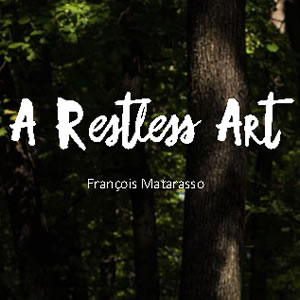The recent book, A Restless Art: How participation won and why it matters, offers a beautiful balance between theory and practice, abstract and concrete. The author, François Matarasso, brings decades of reflection and action to this exploration of participatory or community art. And that combination brings deep value to so many conversations about art making, arts management, and arts in society.

Chapter two, for example, is a clear and compelling primer of the many ways we think about and talk about art in the world – as object, as typology, as act, as meaning. But a particularly lovely passage describes the opportunity of art-making for children, which Matarasso describes as an interplay of five actions:
- Discover their own feelings and ideas, especially the obscure and incomprehensible aspects of their experience, and see how other beings encounter the world, through the stories, games, images and performances they explore;
- Process their experience of being alive by playing with it artistically, pulling it apart and creatively rebuilding it at a manageable scale, unconsciously leaving traces of their imaginative pathway as messages for their future selves;
- Understand what they like, believe, desire and care for through art that holds feelings and ideas, as well as moral, philosophical, even political positions against which they can work out who they—and others—are;
- Organise the tide of childhood experience so that they come to terms with their own imagination and its relationship with reality, albeit at the cost of gradually taming a sense of wonder and awe at being alive; and
- Share their evolving sense-making safely with others, testing their perceptions and positions, influencing the people around them and discovering more about themselves in the world.
Each of these separately and all of these together certainly resonate beyond childhood, as we all practice the challenging act of being human. Imagine where and how your organization, or your professional practice, supports or sparks these actions in those around you, or in yourself. Or how might it do so?
Well worth the reading. Short summary of the book here. Arlene Goldbard’s thoughtful overview here.

